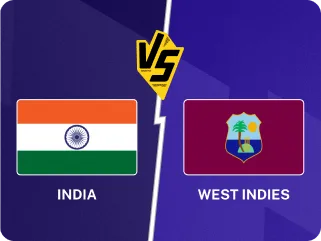
In a move that seems to defy all conventional logic, India have decided to rest Jasprit Bumrah and pick Washington Sundar over Kuldeep Yadav for the Edgbaston Test in order to "add depth to their batting". Naman Agarwal unpicks the decision.
After Tamil Nadu’s Ranji Trophy semi-final loss to Mumbai last year, their head coach Sulakshan Kulkarni offered a blunt assessment: "We lost the match at 9 o'clock on day one," he said, pointing to their decision to bat first.
Unlike Sai Kishore's ill-fated call during the toss in the Ranji semi, the idea of India's playing XI must have been conceived well before Shubman Gill announced the names at around thirty-five past 10 at Edgbaston. But if this Test goes the way logic suggests it might, their post-mortem could echo Kulkarni’s: the game was lost before the first ball was bowled.
At Headingley, India made a compromise by playing Shardul Thakur at No.8, hoping to extract some late batting contribution and a few wickets here and there from the maverick seam-bowling all-rounder. Barring a couple of quick wickets on the final day, Thakur looked out of sorts. India failed to pick 20 wickets, and lost despite five individual hundreds being scored.
The natural course of action would have been to strengthen their bowling to give themselves a better shot at taking 20 wickets, which remains a non-negotiable for winning Test matches.
As a result, calls to play Kuldeep Yadav grew louder and louder, especially following Ravindra Jadeja's lack of wicket-taking threat with the ball. England under Ben Stokes and Brendon McCullum have never faced a wrist spinner at home, and looked much at sea against Kuldeep in India last year.
Instead, following the precedent they set during the Australia tour earlier this year, India picked Washington Sundar in place of Thakur, and oddly, decided to rest Bumrah.
"We were tempted to play Kuldeep but decided to add some depth to the batting," and "No Bumrah. Just to manage his workload. The third Test being at Lord's, we think there'll be more in that pitch so we'll use him there," are straightforward explanations from Gill, but collapse under closer scrutiny.
India suffered two terrible collapses at Headingley, with their last four batters combining to add nine runs across the two innings. Sundar, averaging 42 with the bat in Tests, offers much more reliability than Kuldeep and might solve that issue on paper. But viewed alongside the other changes, the logic starts to unravel.
They have brought in Nitish Kumar Reddy for Sai Sudharshan, who has been discarded after just one Test. If batting depth - also known in cricket parlance as 'bat deep' - is the hill India want to die on, replacing a pure batter, supposed to be your next No.3, with an all-rounder seems counter-intuitive.
Granted, Reddy more than proved himself with the bat during the Australia series, but the fact that he didn't play in Edgbaston and is only playing now is a clear sign that his selection has more to do with the nominal seam-bowling value he offers than his batting. India are hoping to offset the drop in bowling quality due to the selection of Sundar (and resting of Bumrah) by picking Reddy as the sixth bowler.
The result? India have fielded three frontline bowlers and three bits-and-pieces all-rounders, giving the illusion of a six-man attack and batting depth till No.8. But effectively, it leaves them in a no-man's land, providing them with neither enough relevant resources to attack with the ball, nor enough batting depth to compensate for the extra runs they could concede with their weakened bowling, particularly in Bumrah's absence - which makes little sense on its own.
"No ifs and buts, he should have been playing," is how Ravi Shastri, former India head coach called it at the start of play. "You have the best fast bowler in the side in the world, and you make him sit out after seven days of rest. It's something very hard to believe."
India were guilty of doing the same in Australia earlier this year. It didn't end up well for them. The fact that they have gone back to the same plan after one defeat is a worrying sign that it's much more than just muddled thinking. It’s an identity crisis. India don’t seem to know whether they want to play fearlessly or carefully, and in trying to do both, they’re achieving neither.
It’s neither bold nor pragmatic, just safe in a way that feels comforting but achieves nothing. Much like telling people about your goals before you even start to work on them gives you a false sense of accomplishment when nothing really has been achieved.
Of course, there's always a chance that one of the bowlers runs through the England batting or India put up a mountain of runs to bury the hosts under. But even if India manage to come out on the right side, it won't validate their strategy. A confused plan that works can still be a bad plan overall.
Follow Wisden for all England vs India updates, including live scores, latest news, team lineups, schedule and more. The live streaming details for the ENG vs IND series in India, UK, USA and rest of the world can be found here. For Wisden quizzes, head here












